Friday Flyer - October 17, 2025
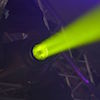
Spotlight on the Texas Tech QuarkNet Center
In late May through early June 2025, the Texas Tech workshop immersed participants in five days of cutting-edge exploration across particle and condensed matter physics. The program began at the Advanced Particle Detector Lab, where participants observed a live detector upgrade meeting and witnessed the first simultaneous assembly of four modules under stringent clean-room conditions. The focus then shifted to the High Granularity DREAM calorimeter project, where the team learned about its innovative fiber design and assisted in constructing a light-tight tent for overnight cosmic ray calibration tests. Later in the week, Dr. Yun Suk Eo introduced participants to the study of emergent properties in condensed matter physics, demonstrating ultra-low-temperature resistance measurements and explaining the meticulous crystal growth process required for his experiments. The experience concluded with the relocation and setup of a cosmic ray muon detector at Frenship High School.
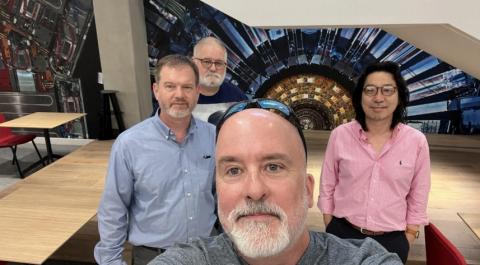
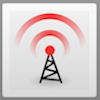
News from QuarkNet Central
World Wide Data Day (W2D2): Registration is now OPEN for W2D2, and the opening W2D2 Memo of the year came out last week. Students may start to analyze data at any time and record their results: more at: cern.ch/w2d2. The Worldwide Google Sheet for W2D2 2025 is linked on the website and the big day is November 20.
QuarkNet has a collaboration with LifeLab Foundation in India to do a series of 90-minute mini-workshops for students and teachers on contemporary physics. The next such opportunity, presented by our Indian colleagues, is on October 31 at 9:00 am U.S. Eastern Time. Maybe it will align with a physics class or a free period! Maybe your students can tell the Indian students about Halloween! Check out the workshop poster and, if you like what you see, fill out the registration for U.S. QuarkNet teachers by October 25.
Update on the Cosmic Ray e-Lab: Our development team continues to actively work to resolve the upload issue in the Cosmic Ray e-Lab and to restore CIMA for CMS masterclasses. We will continue to share progress updates with users through future emails and Friday Flyers.
For the Calendar:
- Dark Matter Day 2025 events occur on or around October 31. Find a Dark Matter Day event near you or online.
- International Cosmic Day 2025: The 14th International Cosmic Day will take place on November 13, 2025. Click here for more information, including how to register.
- World Wide Data Day (W2D2) is set for November 20, 2025. Registration is open until November 10.
- AAPT Winter Meeting 2026: The AAPT WM 2026 will be held January 17-19 in Las Vegas. The deadline for Early Bird Registration is November 14.
- International Masterclasses 2026: Fermilab-based International Masterclasses will be held March 1-28, 2026. The latest IMC circular just came out today, with schedules for IMC26 and W2D2. Stay tuned to upcoming Friday Flyers for future updates.
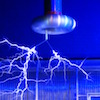
Physics Experiment Roundup
The Nobel Prize in Physics 2025 goes to John Clarke, Michel Devoret, and John Martinis, "For the discovery of macroscopic quantum mechanical tunnelling and energy quantisation in an electric circuit." Read more from the official press release and from this popular information article about this year's prize.
TIME recently announced that the LHC has been inducted into its Best Inventions Hall of Fame as one of the most iconic inventions from the past 25 years. Read about how advanced semiconductor chip technology developed at CERN is driving innovation across fields such as medicine, space travel, material science, and education.
Researchers at Fermilab and Caltech have demonstrated a new method using "squeezed light" to boost the rate at which distant entangled photon pairs can be generated, possibly clearing a major hurdle toward practical quantum networks. After 26 years in operation, the Relativistic Heavy Ion Collider (RHIC) is wrapping up its mission, having repeatedly recreated the high-energy conditions of the early universe via heavy-ion collisions. Symmetry brings us a look into SLAC's Vera Rubin Observatory control room, and Phys.org on the "clever bookkeeping" that virtual particles provide to precisely calculate the interactions of real subatomic particles.
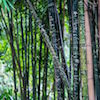
Resources
From the October 2025 issue of The Physics Teacher: Don Lincoln explores the world of exotic hadrons—particles that defy the traditional meson and baryon models. This issue also features an article on a baseball bat and ball collision experiment, and another on introducing quantum entanglement and superposition to secondary students.
High school teams from Belgium, Türkiye, Canada, Mexico and the U.S. won the 2025 Beamline for Schools competition and recently carried out their proposed experiments at accelerator facilities at CERN, DESY, and the University of Bonn.
From Perimeter Institute...We start with a couple of videos: one from Katie Mack on How the Universe Ends and Rethinking the Math of Cosmology. Next, an article on the speed limit of of a quantum computer, another on the theory of everything, and Even Black Holes Have Bad Hair Days. Lastly, Lets Talk Quantum: Unlocking the Potential of the Super Small is an upcoming opportunity on October 30 for students to learn about the basics of quantum and real-world applications.
From MinutePhysics: Common Moon Mistakes, and Why Do Wind Turbines Have Three Blades?
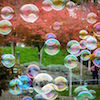
Just for Fun
From the FF archives: With Halloween just around the corner, it's time to sharpen those pumpkin-carving tools, and pick out a design for your jack-o-lantern. Here are some ideas from ATLAS, IceCube, NASA, and NOAA.
Finally, xkcd brings us a physics double standard and some ballooning advice.
QuarkNet Staff
Mark Adams: markadams74@gmail.com
Ken Cecire: kcecire@nd.edu
Spencer Pasero: spasero@fnal.gov
Shane Wood: swood5@nd.edu
